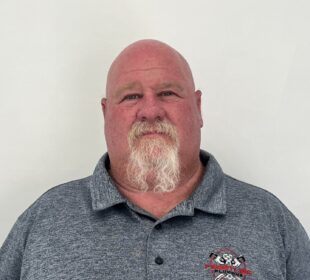In 2022, the Las Vegas Valley Water District (LVVWD) undertook a monumental task, conducting nearly 300,000 analyses on more than 53,650 water samples from various sources, including Lake Mead, our storage reservoirs, and 367 community-wide sampling stations. These efforts extended to sampling stations within customers’ meter boxes. Our commitment is to ensure water quality every step of the way, right up to your meter. We maintain round-the-clock, “real-time” monitoring 365 days a year.
Treating Natural Groundwater
Water drawn from the Las Vegas Valley groundwater aquifer undergoes natural filtration, requiring minimal treatment. It is treated with chlorine as it enters the water distribution system. This ensures that the water remains safe and suitable for consumption.
Lake Mead Water Treatment
For water drawn from Lake Mead, the Southern Nevada Water Authority (SNWA) operates two advanced water treatment facilities, utilizing cutting-edge methods such as ozonation, filtration, and chlorination.
Ozonation is our primary water treatment process. Ozone is a powerful disinfectant known for its superior ability to eliminate bacteria, Cryptosporidium, and microscopic organisms that may be present in the water.
Multistage filtration systems further refine the water by removing particles, contributing to the water’s clarity and safety. Chlorination is employed as the water leaves these treatment facilities to ensure that it remains protected on its journey to your tap.
Extensive Chlorination Across the Distribution System
Chlorination is an integral part of maintaining water quality throughout Southern Nevada’s distribution systems. It is highly effective in destroying viruses and microorganisms during the treatment process and helps maintain disinfection throughout the system. Additional corrosion-control measures are in place to preserve water quality through LVVWD pipelines, all of which are lead-free.
- Arsenic (ppb): 10 ppb, typically from erosion of natural deposits.
- Copper (ppm): 1.3 ppm (Action Level), mainly due to corrosion of household plumbing systems.
- Fluoride (ppm): 4.0 ppm, primarily from erosion of natural deposits and water additives.
- Free Chlorine Residual (ppm): 4.0 ppm (MRDL), used to control microbes.
- Lead (ppb): 15 ppb (Action Level), mostly from corrosion of household plumbing systems.
- Nitrate (ppm): 10 ppm, originating from runoff, leaching, and natural deposits.
- Total Trihalomethanes (ppb): 80 ppb, a by-product of drinking-water disinfection.
- Uranium (ppb): 30 ppb, typically from erosion of natural deposits.
It’s important to note that LVVWD adheres to strict Safe Drinking Water Act standards, testing rigorously to ensure tap water meets these standards. Contaminants are effectively treated and managed throughout the water treatment process.
Before your tap water reaches your home, it goes through a multistage treatment process. LVVWD takes extensive measures to monitor and manage contaminants that may be present in the source water. These contaminants can include:
- Microbial contaminants: These may include viruses and bacteria, often originating from wastewater discharges or animal waste from urban or agricultural runoff.
- Inorganic contaminants: These consist of salts and metals, occurring naturally or resulting from industrial or domestic wastewater discharges, farming, or mining.
- Pesticides and herbicides: These contaminants may enter the water supply through urban stormwater runoff from agricultural and residential uses.
- Organic chemical contaminants: This category includes synthetic or volatile organic chemicals that result from industrial processes, as well as gas stations, industrial discharges, and stormwater runoff.
- Radioactive contaminants: These can occur naturally or result from industrial activities.
The EPA (Environmental Protection Agency) regulations impose limits on certain contaminants in water provided by public water systems. For inquiries about these regulations, you can contact the EPA Safe Drinking Water Hotline at 800-426-4791. You may also visit the Nevada Division of Environmental Protection website for additional information.
At LVVWD, our unwavering commitment is to provide our community with safe, high-quality tap water. We remain dedicated to rigorous monitoring, innovative treatment processes, and maintaining stringent standards to ensure your peace of mind when turning on the tap.
For more information and updates on water quality, visit the Nevada Division of Environmental Protection website at ndep.nv.gov/water.
Note: Water quality and regulations can change over time, so it’s advisable to stay informed about the most current data and guidelines.
For expert plumbing services, contact 725-377-0429 or visit Frontline Plumbing.
